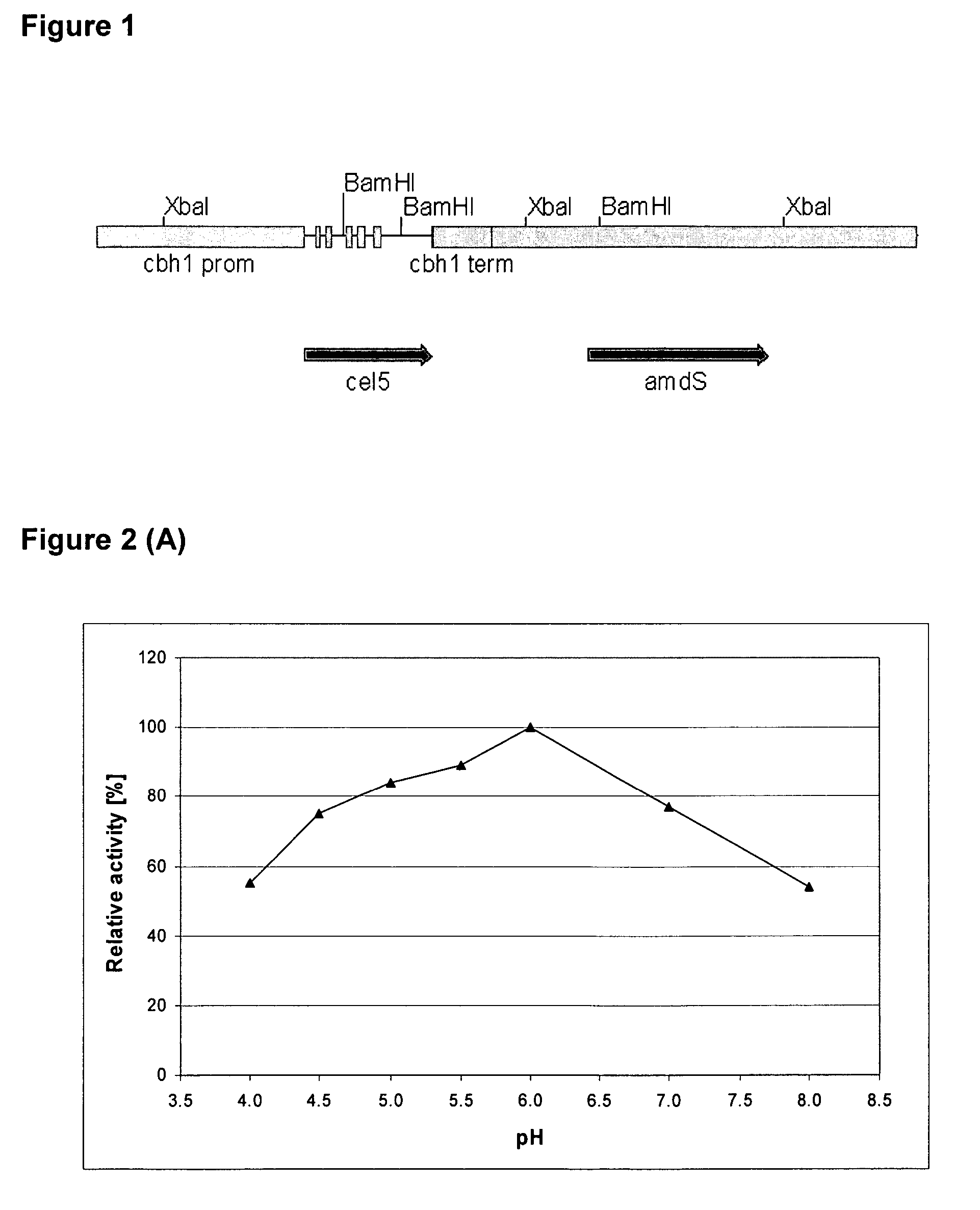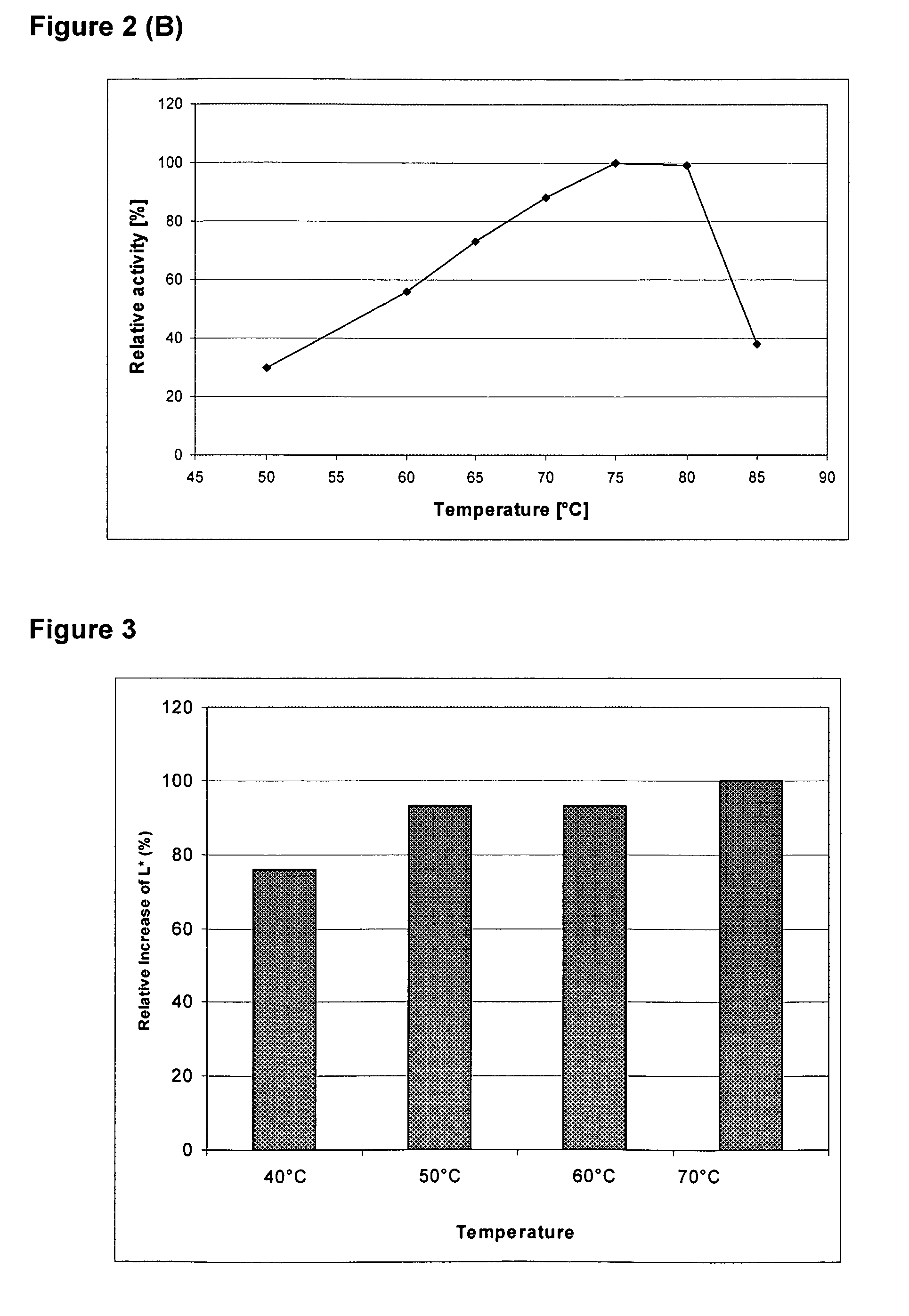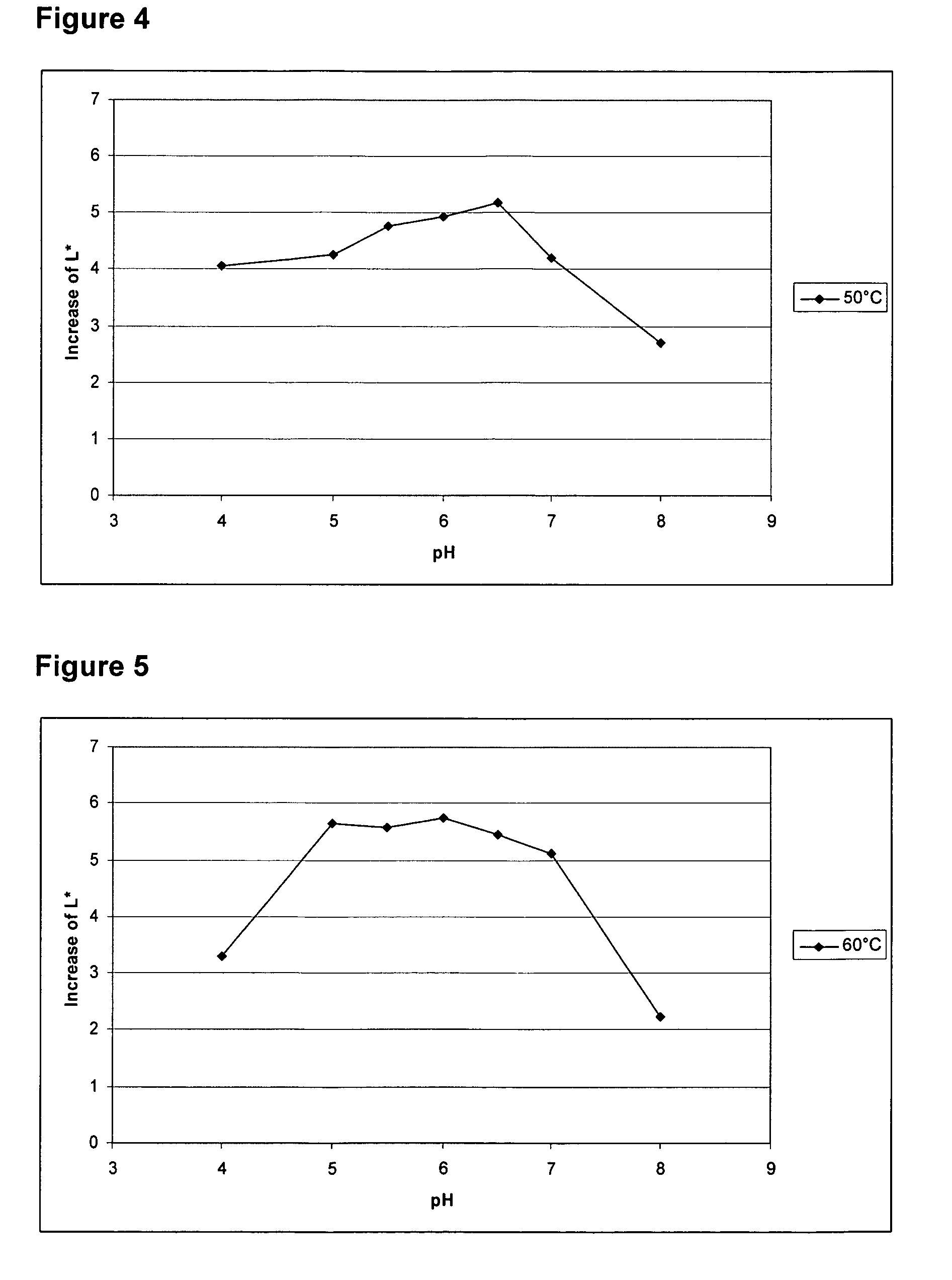Enzyme fusion proteins and their use
a technology of fusion proteins and enzymes, applied in the field of enzyme technology, can solve the problems of reducing the strength of fabrics, burdening the laundering apparatus, and backstaining, and achieve the effect of economic provision and us
- Summary
- Abstract
- Description
- Claims
- Application Information
AI Technical Summary
Benefits of technology
Problems solved by technology
Method used
Image
Examples
example 1
Production of Thermoascus aurantiacus ALK04242 EG28 Cellulase in Trichoderma reesei
[0091]Standard molecular biology methods were used in the isolation and enzyme treatments of DNA (plasmids, DNA fragments), in E. coli transformations, etc. The basic methods used are described in the standard molecular biology handbooks, e.g., Sambrook et al. (1989) and Sambrook and Russell (2001).
[0092]The Thermoascus aurantiacus cel5A gene (SEQ ID NO: 1) encoding EG28 cellulase (SEQ ID NO: 2) was amplified by PCR directly from the T. aurantiacus ALK04242 genomic DNA, isolated by the method of Raeder and Broda (1985). The forward (SEQ ID NO: 9) and reverse (SEQ ID NO: 10) primers were designed on the basis of the published T. aurantiacus endoglucanase sequence (AF487830). The amplified 1.3 kb product containing the exact gene (from START to STOP codon) was cloned as a SacII-PstI fragment into the pBluescript II KS+vector. Two independent clones were sequenced and one clone was selected and designat...
example 2
Production of the Recombinant Thermoascus aurantiacus ALK04242 EG28+CtCBD Fusion Protein
[0097]To produce a recombinant Thermoascus aurantiacus EG28+CtCBD fusion protein (SEQ ID NO: 4), the cellulose binding domain (CBD) of the CBHI / Cel7A cellulase of Chaetomium thermophilum ALKO4265 was linked to the EG28 / Cel5A cellulase. The construct contains the catalytic domain of EG28 (amino acids 1-334 of the full-length polypeptide) attached to the linker region and CBD of C. thermophilum CBHI / Cel7A CtCBD (SEQ ID NO: 15).
[0098]Standard molecular biology methods were used as described in Example 1. First, a unique SnaBI restriction site near the C-terminal end of the EG28 / Cel5A sequence was introduced by PCR. This enables direct fusion of any blunt-ended DNA after amino acid Y334 of the EG28 / Cel5A polypeptide. The linker and CBD region of the C. thermophilum CBHI / Cel7A encoding gene (cel7A, SEQ ID NO: 7) was amplified by PCR using forward (SEQ ID NO: 11) and reverse (SEQ ID NO: 12) primers and...
example 3
Production of the Recombinant Acremonium thermophilum ALK04245 EG40+CtCBD Fusion Protein
[0101]For production of a recombinant Acremonium thermophilum ALK04245 EG40+CtCBD fusion protein (SEQ ID NO: 6), the cellulose binding domain of EG40 cellulase is replaced with that of the Chaetomium thermophilum ALK04265 CBHI / Cel7A. The construct contains the catalytic domain of EG40 cellulase (amino acids 1 to 234 of the full-length polypeptide) attached to the linker region and CBD of C. thermophilum CBHI / Cel7A (CtCBD, SEQ ID NO: 15).
[0102]Standard molecular biology methods are used as described in Example 1. The Acremonium thermophilum cel45A gene (SEQ ID NO: 8) is amplified by PCR from the A. thermophilum ALKO4245 genomic DNA using primers (SEQ ID NO: 13) and (SEQ ID NO: 14). The 1.1 kb PCR fragment is cloned as a SacII-PstI fragment into the pBluescript II KS+ vector. After this, a unique NruI restriction site near the C-terminal end of the EG40 sequence is introduced by PCR. This enables d...
PUM
| Property | Measurement | Unit |
|---|---|---|
| pH | aaaaa | aaaaa |
| pH | aaaaa | aaaaa |
| pH | aaaaa | aaaaa |
Abstract
Description
Claims
Application Information
 Login to View More
Login to View More - R&D
- Intellectual Property
- Life Sciences
- Materials
- Tech Scout
- Unparalleled Data Quality
- Higher Quality Content
- 60% Fewer Hallucinations
Browse by: Latest US Patents, China's latest patents, Technical Efficacy Thesaurus, Application Domain, Technology Topic, Popular Technical Reports.
© 2025 PatSnap. All rights reserved.Legal|Privacy policy|Modern Slavery Act Transparency Statement|Sitemap|About US| Contact US: help@patsnap.com



